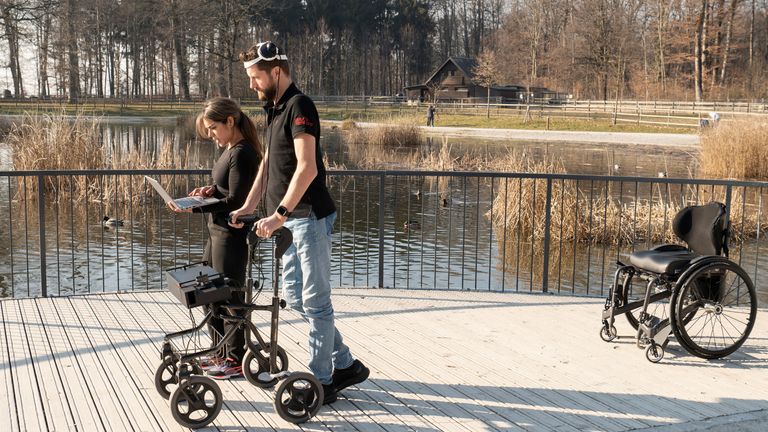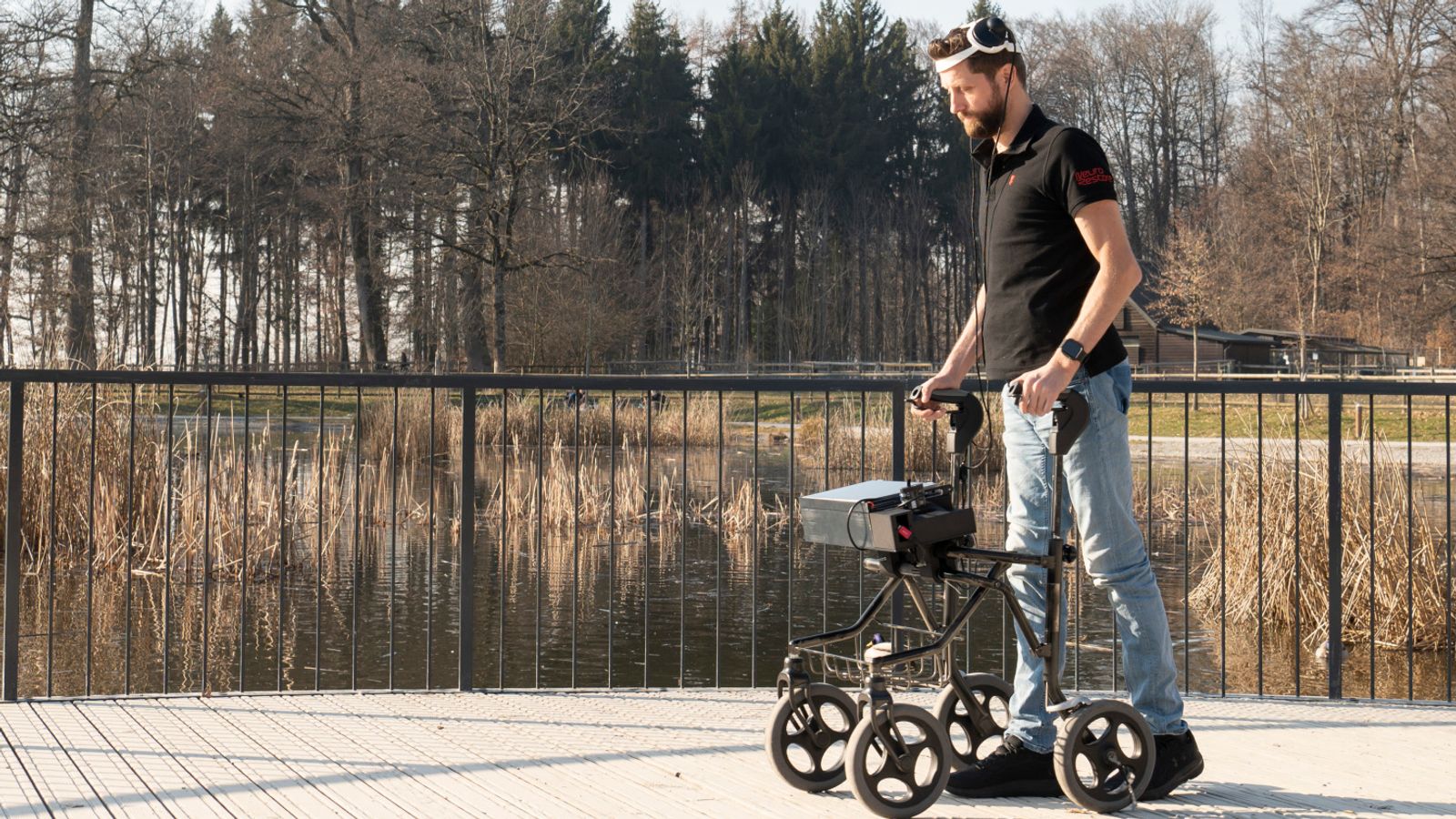In 2011, a man experienced paralysis following a cycling accident. However, through an innovative medical procedure, he can now stand and walk with the assistance of a device that interprets his brain signals and facilitates muscle movement in his spine.
Gert-Jan Oskam, aged 40, was initially informed that he would never regain the ability to walk after fracturing his neck in a traffic incident in China. Nevertheless, he has surpassed expectations by successfully ascending stairs and walking distances exceeding 100 meters since undergoing the operation.
“A few months ago, I was able, for the first time after 10 years, to stand up and have a beer with my friends,” said Oskam, who is from the Netherlands. “That was pretty cool. I want to use it in my daily life.”
This achievement is credited to a team of Swiss neuroscientists devoted to developing brain-machine interfaces for overcoming paralysis. Their latest advancement, known as the “digital bridge,” employs wireless technology to restore the connection between the brain and immobilized muscles caused by spinal cord injuries.
In a prior trial, Oskam participated in testing a system that replicated the rhythmic steps of walking by transmitting signals from a computer to his spinal cord. While the device enabled him to take multiple steps at once, the movement exhibited a somewhat mechanized quality and necessitated manual initiation through a controlled mechanism.

In the recent update, Professor Jocelyne Bloch, a neurosurgeon at Lausanne University Hospital, implanted electrodes on Oskam’s brain to detect neural activity when he attempted to move his legs. These readings are then processed by an advanced algorithm that converts them into subtle electrical impulses. These impulses are subsequently transmitted to additional electrodes in his spinal cord, stimulating the nerves and prompting the appropriate muscles to generate the intended movement.

“What we’ve been able to do is re-establish communication between the brain and the region of the spinal cord that controls leg movement with a digital bridge,” said Prof Grégoire Courtine at the Swiss Federal Institute of Technology in Lausanne. He said the system could “capture the thoughts of Gert-Jan and translate those thoughts into stimulation of the spinal cord to re-establish voluntary leg movements”.
Although the device does not facilitate seamless or rapid strides, Oskam describes the implant, as detailed in a respected scientific publication, as enabling more natural movements compared to previous methods.

This is due to the fact that the initiation and control of standing up and walking are now governed by his conscious thoughts. The signals emitted by the device effectively activate the necessary muscles, allowing flexion of the hip, knee, and ankle.
Furthermore, the device appears to have a positive impact on rehabilitation. After participating in over 40 training sessions with the implant, Oskam, who did not sever all the nerves in his spinal cord, exhibited regained control over his legs, even when the device was inactive.

While this research is still in its early stages, the researchers are optimistic that future miniaturized devices will offer assistance to stroke patients and individuals with paralysis, enabling them to walk, regain control of their arms and hands, and manage other functions affected by spinal cord injuries, such as bladder control.
With Oskam showing progress more than a decade after his accident, the team is confident that other patients with more recent injuries could fare better. With Oskam “it’s more than 10 years after the spinal cord injury”, Courtine said. “Imagine when we apply the digital bridge a few weeks after spinal cord injury. The potential for recovery is tremendous.”


